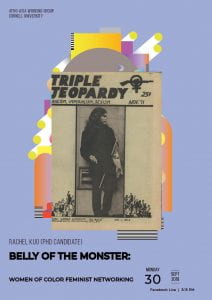Sun Ra’s message for black people and desire to transport them to a place where they can actually exist made me think of Nas and Damian Marley’s verses on “Patience”. A large amount of Egyptian iconography is used throughout the music video as Nas and Damian grapple with man’s misguided thirst for knowledge, hypocritical acts, and ignorance of what it means to preserve humanity. Men lack patience and destroy things recklessly in order to feel closer to getting answers; answers that could be found in a truth they have masked and distorted in the media for capitalist purposes.
“Some of the smartest dummies
Can’t read the language of Egyptian mummies
An’ a fly go a moon
And can’t find food for the starving tummies
Pay no mind to the youths
Cause it’s not like the future depends on it
But save the animals in the zoo
Cause the chimpanzee dem a make big money
This is how the media pillages
On the TV the picture is
Savages in villages
And the scientist still can’t explain the pyramids, huh
Evangelists making a living on the videos of ribs of the little kids
Stereotyping the image of the images
And this is what the image is
You buy a khaki pants
And all of a sudden you say a Indiana Jones
An’ a thief out the gold and thief out the scrolls and even the buried bones
Some of the worst paparazzis I’ve ever seen and I ever known
Put the worst on display so the world can see
And that’s all they will ever show
So the ones in the West
Will never move East
And feel like they could be at home
Dem get tricked by the beast
But a where dem ago flee when the monster is fully grown?
…
The Earth was flat if you went too far you would fall off
Now the Earth is round
If the shape change again everybody woulda start laugh
The average man can’t prove of most of the things
That he chooses to speak of
And still won’t research and find out
The root of the truth that you seek of
Scholars teach in Universities and claim that they’re smart and cunning
Tell them find a cure when we sneeze
And that’s when their nose start running
And the rich get stitched up, when we get cut
Man a heal dem broken bones in the bush with the wet mud
Can you read signs? can you read stars?
Can you make peace? can you fight war?
Can you milk cows, even though you drive cars? huh
Can you survive? Against all odds, now?”
